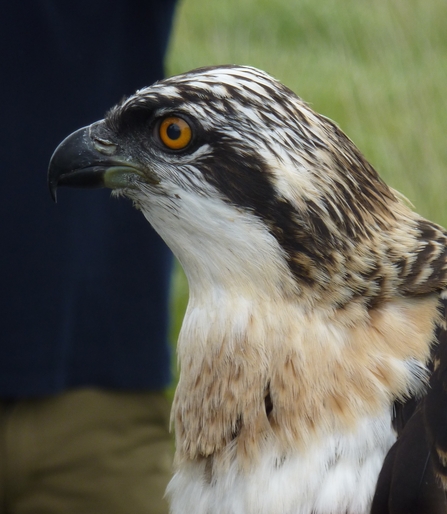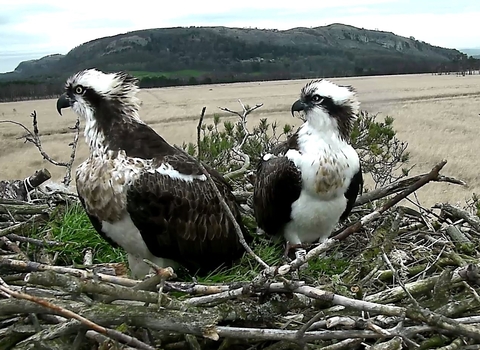Our two young ospreys are five weeks old and now sporting smart ankle bands.
Early morning on Tuesday 2 July the chicks were carefully lifted from the nest to the ground below where they were checked over, identity tagged, weighed and measured. We were also able to confirm that they're two males; Blue 0C5 weighing in at 1580g and Blue 0C6 weighing 1450g.








